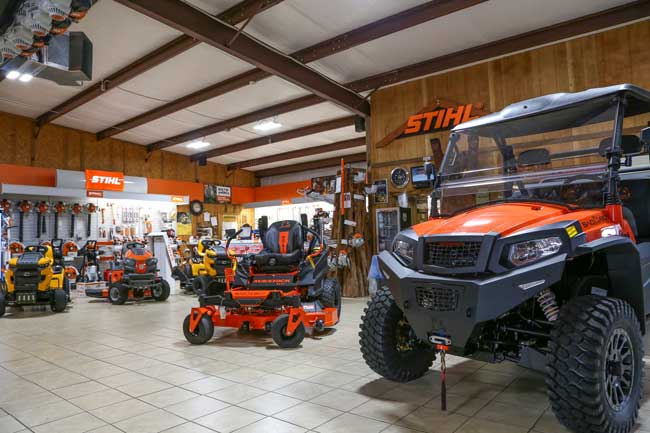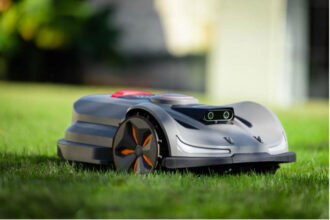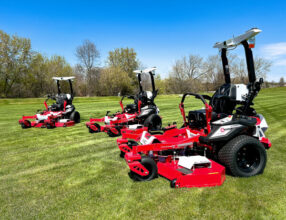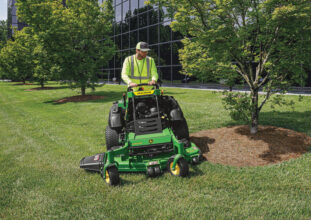Should you add a brand to your dealership?
“Distribution is the difference between a good company and a great company,” said John Sloan, director of sales for Kress’s OPE division. And to be great, manufacturers need to increase the quantity and quality of their distribution. They can sell more to current customers, and they try to, and they can gain new customers. That’s you, the OPE dealer.
Equipment Manufacturers Want New Dealers
Of the 15 manufacturers I spoke with for this story, 15 said they are recruiting new dealers. 100 percent. Some said “actively.” Others said “always.” A few indicated a more targeted approach.
“The pursuit of new dealers never slows down,” said Jeremy Krueger, Stihl’s director of business development.
Here’s another voice. “Husqvarna is actively pursuing the right market partnerships,” said Richard Bennett, senior director, dealer sales for Husqvarna Group. “We regard OPE dealers as the key to growth for our brand and we are committed to increasing our presence across the U.S. and Canada.”
On the other side of this business relationship, I surveyed a few dozen dealers, and 53 percent of them said they were not currently interested in adding a new brand. Why not? Their answers fell into a few groups of responses. First, “too many brands now,” or that they “want to focus on current products.” Second, “I’m not interested in expanding,” or they are “thinking of retiring.” And third, one dealer summed up the “tough sales environment” mindset by saying, “Sales aren’t strong enough to support what I currently have so why would I add more?” Still, 47 percent of dealers we surveyed said they are considering adding a brand. We’ll get to that.
While I surveyed and interviewed dozens of people – dealers and manufacturers – for this story, the output is not scientifically valid. But the research, in words and numbers, does tell a story. And when you mix in the changing marketplace, with the rise of battery-powered equipment, the evolution of retailing, and need for business support, the tale gets even more interesting. Manufacturers need a continually growing and evolving distribution mix, while retailers need a right-sized product mix that can attract consistent consumers. Can this gap be bridged? Let’s break this down into three topics –Equipment Evolution; Changing Retail Marketplace; Business Support – to see if the “I have enough products” dealers should reconsider adding a brand.
Equipment and Dealer Evolution
I asked OPE manufacturers to share with me the two or three main benefits (beyond product features and benefits) their brand offers to dealers. Several manufacturers talked about marketing assistance, and field service personnel, and other non-product advantages. But they quickly came around to share benefits of the products they make and sell.
“We can’t not talk about products,” said Carlos Haddad, V.P. and general manager of Husqvarna’s North American Professional Business unit. “Every manufacturer exists mainly because of the quality of their products.”
“Unique technology; that’s our No. 1 thing,” emphasized John Sloan of Kress. “We are the only ones with a simple charging solution.”
And while both of these leaders are correct, in theory, a manufacturer that leads with product features and benefits can always be outdone by newer, better, or higher-tech products. Husqvarna might currently have more robotic mowers maintaining suburbia than other brands, but the competition is increasingly rapidly with new autonomous mowers coming soon in a range of brand colors. Kress, meanwhile, is gaining new competitors in the battery-charging arena.
These manufacturers weren’t saying it’s all about products, but they were emphasizing the importance of product details to their brand story. Whether for specific innovations, or unique technologies, or breadth of product offerings, or limited focus of their offerings, manufacturers like to talk about their products.
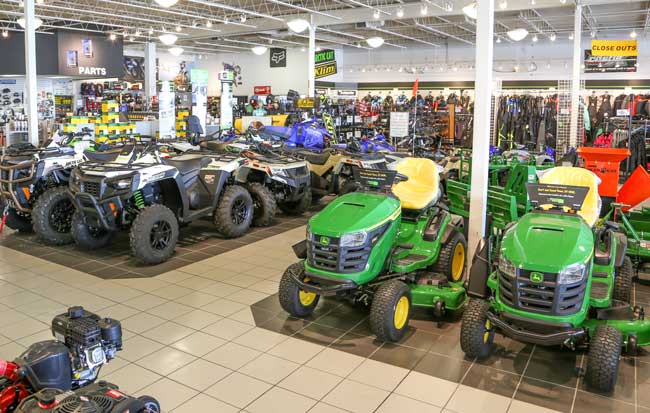
I stopped at my local OPE dealer, Century Power Equipment, to speak with owner Roger Tuckner. “I’m not currently looking at adding a brand, and I will probably drop one soon,” he said. “It’s easy to get too much product in here, and that can make it harder for both salespeople and customers.” Tuckner acknowledged that a multi-brand presence can be a draw for shoppers who see all the brand names on outdoor signage, but then it leads to the paradox of choice during decision time. If you’ve not heard of the paradox of choice, look at the orange juice options on your next grocery run. No, it’s not that bad with zero-turn mowers, but Tuckner’s point is that dealers can compete with themselves in store.
Two Opportunities
Adding a brand’s products to your dealership does present an opportunity in two ways. First, with innovation; that means battery-power or robots and autonomous products. And second, with a new-to-market product or a new brand. When I wrote our “Power Shift” feature story recently, I spoke with some dealers who said their customers just weren’t interested in battery products. It’s hard to argue with that, but the improving performance of many battery-powered products can make a convincing argument. If your store doesn’t have a robust offering of battery tools and charging options, it’s time to reconsider. Cordless drills and circular saws have changed the DIY market potential for the big-box stores. And battery powered OPE tools are beginning to do the same. Battery charging innovations from manufacturers like Kress and Greenworks are making these tools more usable for pro users too. Established brand names like Makita are working to expand a presence in power equipment and independent dealers. Batteries and charging are Reason No. 1 to consider adding a brand.
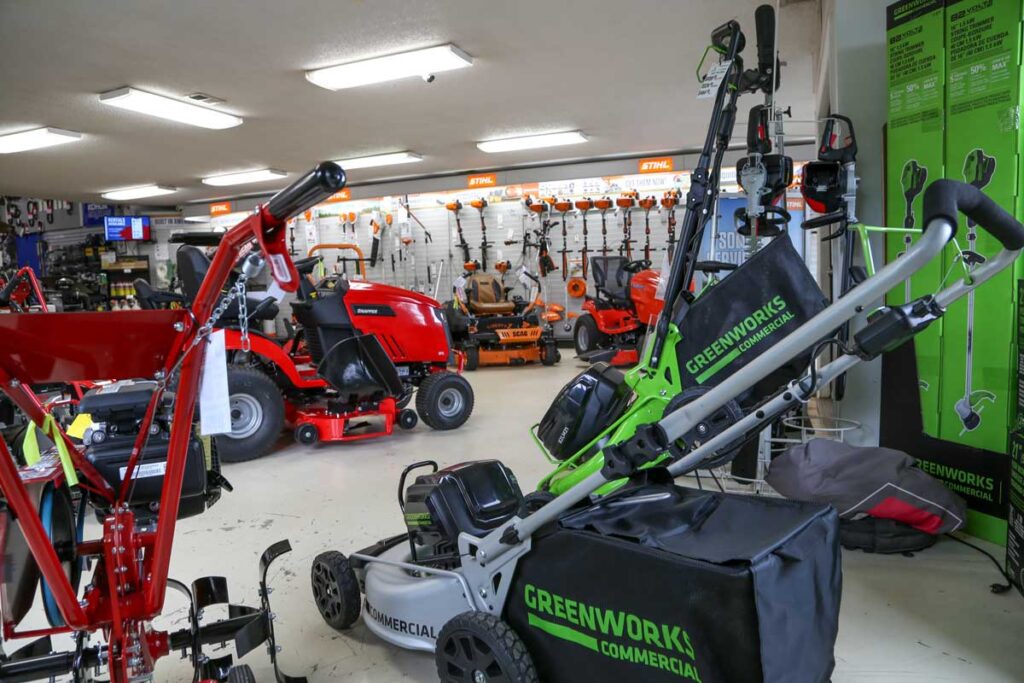
Product technology is evolving well beyond just reduction of gas cans. “The dealer of the future will get a notification” said Carlos Haddad from Husqvarna, “from a landscaper’s backpack blower that it could stop working in a matter of hours. And that dealer can call and alert the landscaper. This kind of thing is happening with much more expensive equipment. The OPE dealer will be able to supply superior service. We are developing tools that will make this solution possible, but the dealers will also need to evolve to make this a reality.”
And young brands, or brand launches, will enter the power equipment market to present dealers with opportunities. Launching soon in OPE and looking for dealers, Yakta manufactures zero-turn mowers. But even as this manufacturer, with years of experience building products for the agricultural market, enters the mower market, it’s focused on dealer relationships as much as products. “It’s a partnership,” said Andrew Firth, Founder of Yakta, one of the newest manufacturers to enter the market. “I’m not interested in just delivering products to your store, but in making your customers happy.”
Changing OPE Retail
As Harold Redman told us at the recent Echo tools new product event, “This is a relationship business.” Redman has been President and CEO of Echo Tools for about six months, and he’s been in the industry for years. The brand behind products can present new opportunities for retailers. And for OPE dealers working to compete with the Home Depot outlet in their neighborhood, that could be a smart business move.
Yes, Echo sells some products through Home Depot, too. That’s today’s retail reality. Roger of Century Power Equipment, my local OPE dealer, told me he does well with Stihl products even though the Ace Hardware one mile north also carries Stihl. And the Lowe’s one mile to the east will carry Toro and further compete with Tuckner’s business soon. He’ll continue to have a service edge over those two retailers. That’s not ideal, he admits, with brands not always paying fair shop rates or getting parts to him on time. He and all independent dealers need to accept the conditions of certain brands, or find others.
On the topic of mass retailers, “Dealers can look at this in a couple ways,” said Christin Wam, senior director of marketing for Briggs & Stratton’s Turf & Consumer Products. “It’s great for brands, and that can raise awareness for dealers. Some dealers see it as cheapening the brand, and many are not happy with servicing products sold elsewhere.” Her team’s research points to an opportunity. “Generationally, we’ve seen research where a lot of young shoppers do value the ‘shop small’ ethic,” she said. “In general, they do less DIY and fix-it work, so they need an independent dealer.”
A couple dealers we surveyed are considering adding a new brand specifically because of the evolution of products and retailing. “We are trying to adapt to the ever-changing environment. Consumer equipment is not the future,” said one dealer. Another, “We are in the process of adding Kress battery tools. And we’re looking at utility tractors and construction equipment to diversify our commercial offerings.”
That can present an opportunity for a brand like Bobcat. “The breadth of our product bundle is greater than other OEMs,” said Steve Ross, Bobcat Company senior director grounds maintenance equipment, commercial business. “This provides our dealers with more opportunities to serve their existing customers and reach new customer bases to grow their business.” And he adds that the recognition of “the Bobcat brand and the quality of its products can help draw new customers to their business.”
Equipment manufacturers with well-known brand names like to talk about the brand reputation as a draw for customers. That can be true, with limits. “The allure is that a dealer will get more business because of an additional brand,” said Ed Wright, CEO of Wright Manufacturing. “But if the dealer is established in the market, [an additional brand is] unlikely to add more business. Demand is generated by a dealer’s clientele and product offering. It’s like plowing with two oxen, you can only go as fast as the weaker one… and the dealer ends up frustrated with more overhead.”
Business Support
New manufacturer Yakta knows it’s entering a competitive marketplace where dealers have inventory and established relationships. CEO Firth points to his company’s two focus areas. With Yakta’s launch at Equip Expo, he’ll tell dealers, “First, we stand behind you and back you up for success. And second, it’s a partnership.” Yakta hopes to prove that to OPE dealers.
Ed Wright sees the business side as a vital component, and “a good reason to change brands. You can diversify supplier dependency while realigning with a brand that has a greater commitment to dealer exclusivity, product segment, and better product execution, like parts, warranty policy, tech support.”
Support for a dealer’s business goes well beyond a manufacturer providing POP materials and brochures. “We are here for the long run to support dealers,” said Chris Vogtman, managing director in Toro’s residential and landscape contractor division. “We can support them in any season. And we’re trying to help dealers with other business needs like succession planning. If a Toro dealer wants to get out, and some are having a hard time selling, we connect our distributors and make sure they have a growth plan. There are things I can’t talk about with you. But I’m excited about where we’re headed.”
I will follow up with Vogtman on that (note, Vogtman is no longer with Toro), and dealers need to press manufacturers hard on this “business support” question. From product floor planning to parts delivery to preferred partner programs, support and the requisite communication is key to success for a dealer-brand relationship.
“We have dedicated inside and outside sales teams,” said David Piercy, marketing director at Landmaster, an American manufacturer focused on UTVs and looking closely at power equipment and ag industries. “They’ll help onboard dealers and are very hands-on to help with marketing, sales, service, and other aspects of their business. It’s one person that comes along side with them as their business partner.”
Talk to manufacturers specifically about product ordering processes. Landmaster has a unique made-to-order retail system where customers customize UTVs for their needs. On the handheld side, Makita tools often encourages its dealer customers to “keep a light inventory of our products to encourage inventory turns,” according to Dennis Stauch, V.P. and GM of Makita’s OPE group. “Much different than with gas product, battery product innovations result in step changes in technology very fast. If a dealer has big inventory of last year’s products it may take the dealer one or two seasons to sell old inventory to make room for new.”
From the topic of online sales to big-box stores, dealers should vet their manufacturers as strictly as those OEMs scope them out. Clear communication and proven policies are great, but both sides need to be adaptable, today more than ever.
“We have not decided on a particular brand,” said one dealer through our survey. “Just started looking and trying to decide what would be a good fit for my market.”

